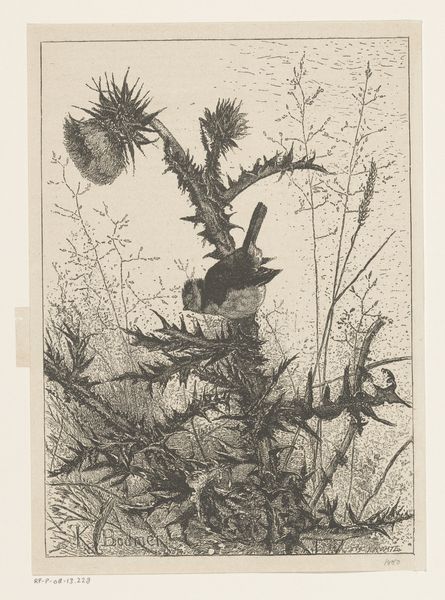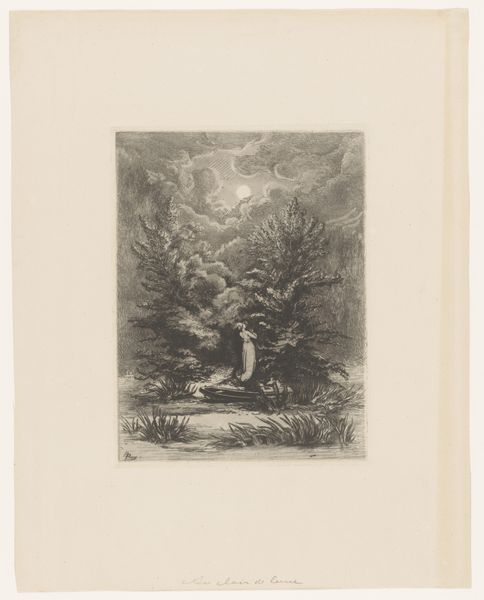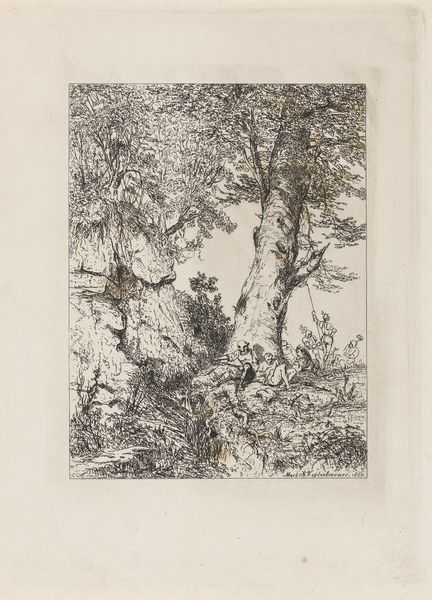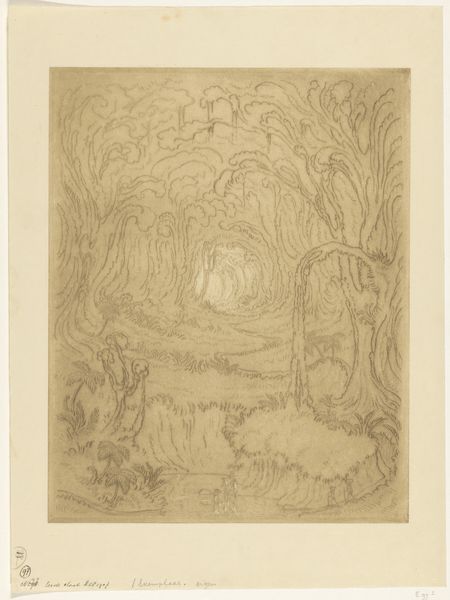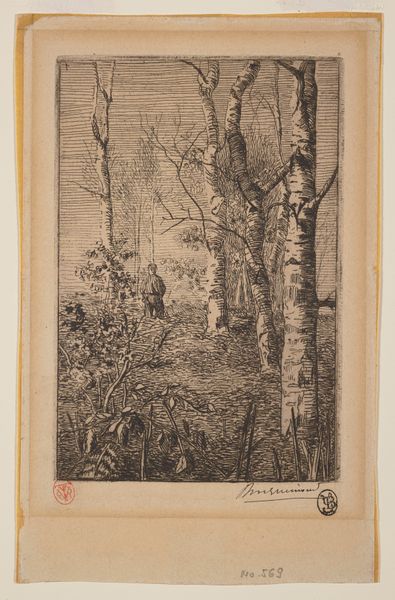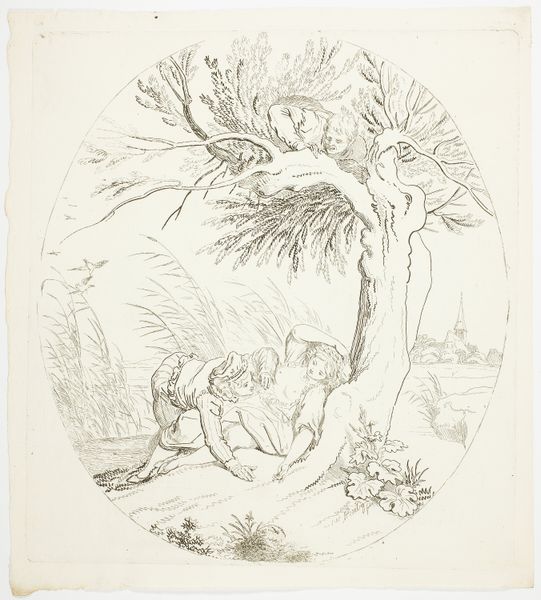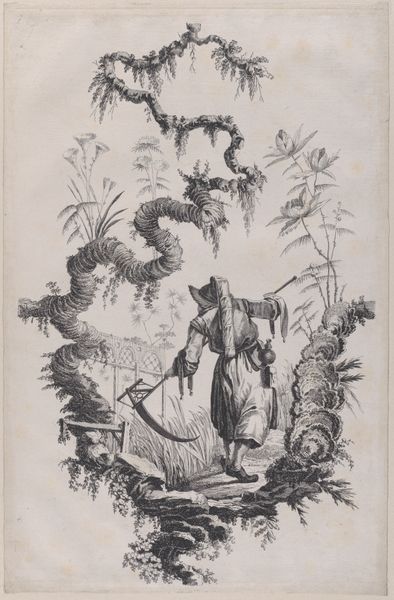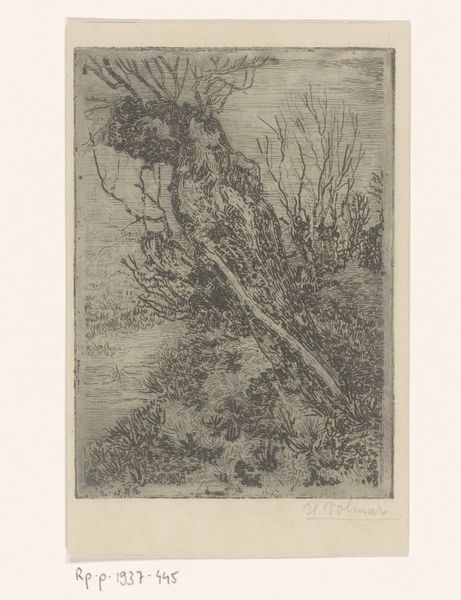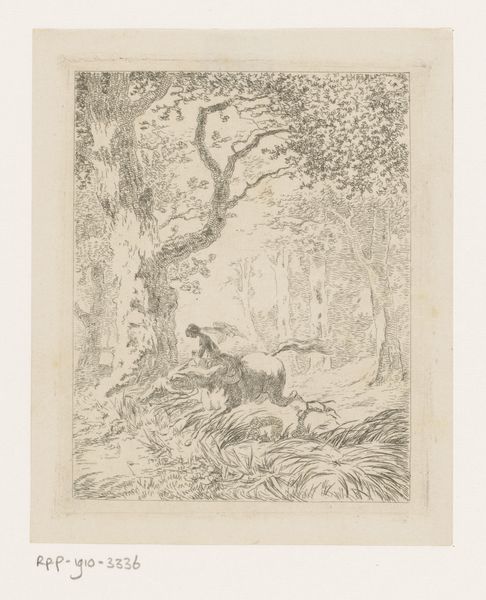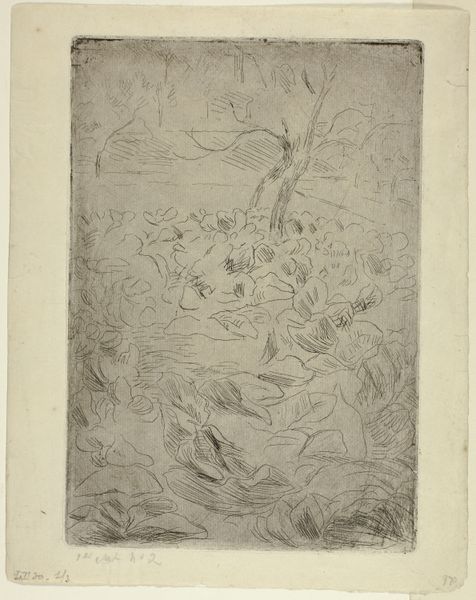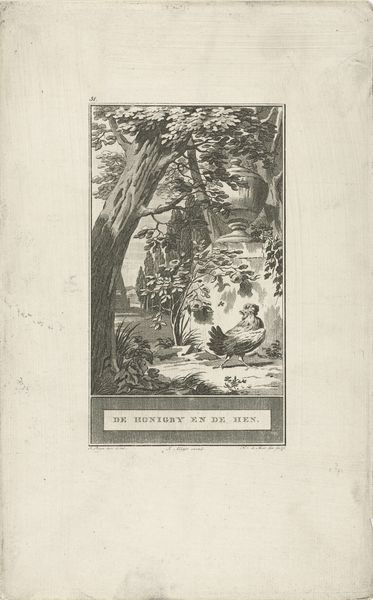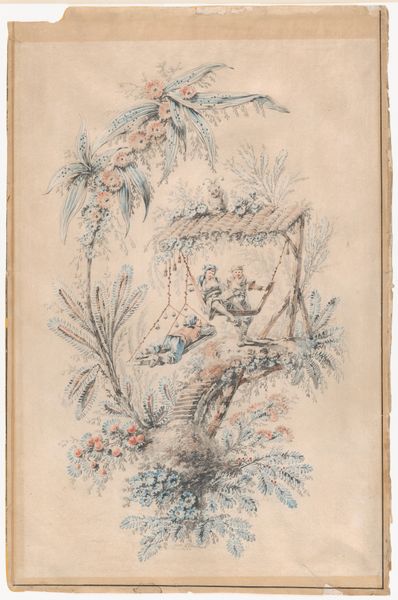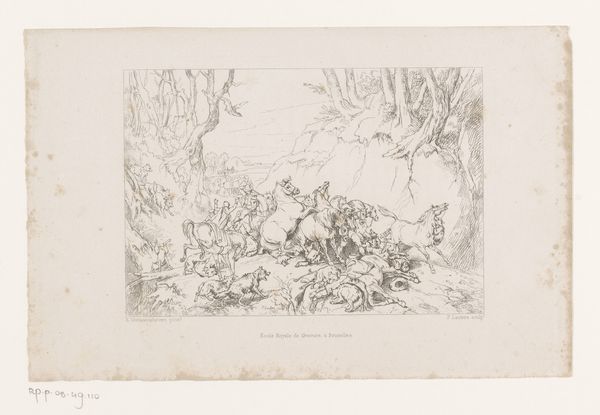
Dimensions: plate: 16 x 10.2 cm (6 5/16 x 4 in.) sheet: 20.6 x 14.4 cm (8 1/8 x 5 11/16 in.)
Copyright: National Gallery of Art: CC0 1.0
Curator: Félicien Rops' etching from 1868, "Frontispiece: The Waifs (Les Epaves)," certainly confronts us with some rather macabre imagery. Editor: Absolutely, there's a very clear narrative being presented here through the etching. My first impression is a somewhat haunting blend of decay and playful whimsy. Is that an intentional discordance at play here? Curator: I find the tension intriguing, certainly. Note how Rops uses line and density to create distinct layers within the composition, dividing it into realms: there’s a celestial one, with a cherubic figure, almost angelic, contrasted immediately with the earthbound and its more terrestrial realities, figured with decaying matter. Editor: That tonal contrast strikes me—he's playing with states of decomposition. The etching technique allows him to articulate textures precisely, from the bones to the text inscribed around the image. Consider the materiality of the plate used to make the print; one has to respect how he worked the metal. Curator: True, but within that grounded decay, we have textual interventions like "Les Epaves" inscribed above a skeleton figure, functioning symbolically like an inscription one might find above a tomb, reinforcing our allegorical interpretation. Editor: Exactly! The printing process itself, the labor-intensive etching technique, parallels the theme: it's all about slow reveal, exposing through corrosion, almost as if replicating processes of biological decomposition. The contrast of materials and intellectual labour is worth appreciating. Curator: Ultimately, the composition evokes Mannerism, especially with its exaggerated forms, but merges that art-historical nod with the Symbolist movement. I would say the aesthetic choices are driven by their suggestive meaning and impact. The image speaks of life's inevitable conclusion but with a dark sort of humour. Editor: Agreed. Appreciating the work through the lens of both labor and pure semiotic interpretation has made the complexities even more vibrant, especially Rops' skill at uniting disparate symbols and raw technique into this intricate statement. Curator: Yes, and pondering it further, the careful composition, almost like a stage, prompts an introspection that invites questioning our individual perspectives, beyond technique. Editor: And that speaks to its success. By embracing process and thoughtful consideration of line, we can start to engage fully with Rops' work and see his creative vision revealed more completely.
Comments
No comments
Be the first to comment and join the conversation on the ultimate creative platform.
